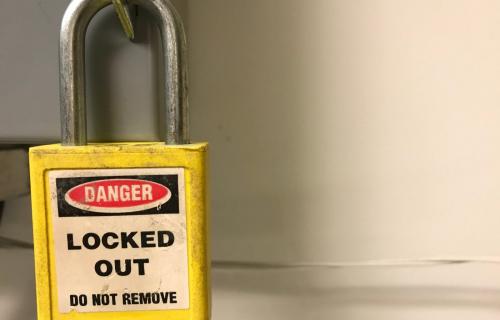How Does Isolation Locks Might Help You?

Every lockout tagout is thoroughly standardised for the purpose of maintaining and repairing devices. However, what happens when you consider a workforce that may be dispersed throughout several machines, departments, professions, and shifts? The possibility of unintended re-energization increases, as does the need for additional safety measures. Most of us are accustomed to the common padlocks we use to protect our possessions. But did you know that there is a unique kind of lock made just for security?
Isolation locks are used in industrial settings to ensure that equipment is properly shut down and locked out before maintenance or repair work is performed. In this blog post, we'll explore how isolation locks might help you in your own life. Whether you're a homeowner, a business owner, or just somebody who wants to be prepared for anything, read on to learn more about these intriguing locks!
Isolation Locks’ Role
A system, machine, or piece of equipment cannot suddenly and uncontrollably release energy without the use of locks or other similar measures. It refers to the process of neutralising all of the physical energy contained within a piece of equipment before starting any maintenance or repairs.
Locks typically shut off any energy flow, such as shutting off switches or valves on supply lines, closing switches and valves, and placing a machine, device, or electrical power line in a disabled state like application blocks or blanks. Locks can also exert pressure to cause hydraulic and pneumatic bleed from food lines. When machinery is turned on while being repaired or when power is restored following a power outage, workers may be hurt.
Some systems may now start and stop in a way that is considerably more unexpected because of the use of computer equipment. When power sources are mistakenly turned on or when valves are accidentally opened before the task is finished, significant damage or death might follow. Because of this, it's crucial to make sure that all energy sources are correctly locked and that they stay locked until the operation is finished.
Inactivity of the lock may result in uncontrolled energy. contact with live electrical wires or electrocution Injuries such as burns from contact with parts, materials, or equipment like hot ovens, fires, explosions, or chemical exposure from gases or liquids released from pipelines. Incisions, bruising, crushing, amputations, and death due to entanglement with belts, chains, conveyors, rollers, shafts, paddle wheels, and turbines.
Occlusion in bulk material from bins, silos, or hoppers. Drowning in liquid tanks and reservoirs. A mechanical movement, compressed gases, electrical systems, steam, heat, cold, hydraulic pressure, chemical energy, tension springs, natural gas, air, fuel system, explosive mixtures, toxic mixtures, and liquids can all store energy. These sources of energy are referred to as potential and phase energy.
Isolation Locks For Workplace
An energy source might be a part of any machinery. Electricity, heat from a furnace, and gravitational energy from a falling object or piece of machinery are a few examples of energy sources that are readily obvious. A tightly coiled spring or the air pressure in a pneumatic system are two less visible energy sources. The system must be cut off from both its main power source and any stored energy in order to control dangerous energy. The mechanical energy in springs and tension belts might be stored. The gravitational energy of moving elements like pistons may be stored and held in mid-motion. Gravity will make the component fall or swing down if it is released.
Even after the energy sources for many devices have been cut off, energy is still stored in them. Energy may be stored in capacitors in electrical devices. The pressure between a closed energy isolation device and the machine's moving elements can still be maintained in machines that use hydraulic or pneumatic energy. The fuel in the lines of devices that use chemical energy may still be present. Before repair or maintenance can start, all stored energy must be released and disengaged. All moving parts must also be firmly secured in place or lowered to prevent movement while maintenance is being performed.
Isolation Locks For Employee
Both authorised and impacted staff should be included. A person who is qualified to regulate hazardous energy is an authorised person. They have the necessary education, training, and experience. A lockout/tagout procedure will be carried out before starting work on the equipment, and the authorised person normally conducts the necessary repairs or maintenance while informing all impacted personnel of this. The only person permitted to remove locks or tags once work is completed is the authorised person who applied the locks and tags, held the keys to the locks being used, and controlled the locks' locks.
The machine's operator or another individual, such as a qualified repair person, may be the authorised person. Any employee who is impacted by the equipment's inoperable condition and who is not a part of lockout/tagout or repair activities is considered an affected individual. Employees that share a workspace are also included as affected if the equipment shutdown interferes with their ability to do their jobs.
Isolation Locks Products
If you are looking for quality isolation locks, LockSafe is the perfect company to contact. They have been in the business for many years and have a team of experts who can help you find the right lock for your needs. Contact them today to learn more about their products and how they can help you keep your workplace or office safe.
Post Your Ad Here

Comments